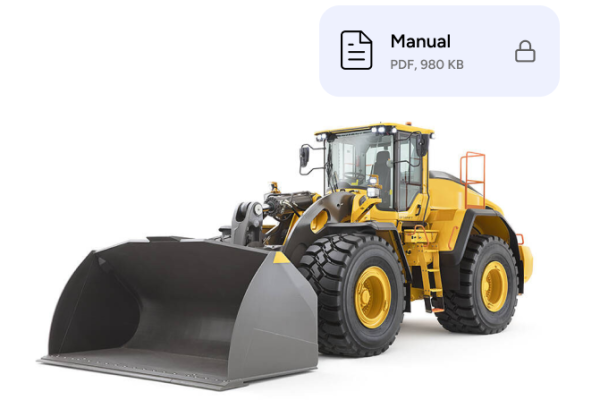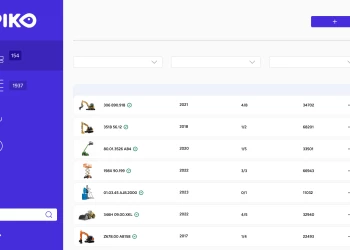Construction Document Management – What is the purpose of DMS for construction industry?

Given the complexity and scale of these projects, involving a broad spectrum of stakeholders like general contractors, subcontractors, and architects, effective document control is essential. The need for an organized approach to document management in construction cannot be overstated, as it encompasses everything from contracts and specifications to permits and plans.
Managing paper documents can lead to numerous challenges, including delays in approvals, risks of loss, and issues with readability. Embracing a digital management system significantly reduces these risks, enabling secure sharing, improved organization, and enhanced visibility into crucial project data. By centralizing documents in a single digital space, construction teams can foster better collaboration with clients, subcontractors, and partners.
Ultimately, the core purpose of a document control construction system is to streamline workflows, ensure compliance, and facilitate real-time access to vital information. As the construction sector moves towards digitalization, implementing an effective construction documentation management system not only enhances efficiency but also drives cost savings for organizations and enhances security in managing sensitive project details.
What is construction document management?
Construction document management refers to the systematic approach of handling all documentation associated with a construction project. This includes the creation, processing, storage, and sharing of documents throughout the project’s lifecycle. An efficient construction document management system plays a vital role in ensuring that all team members work from the same set of plans, thereby controlling costs and minimizing confusion.
What are the types of construction documents?
Key types of construction documents encompass contracts, design drawings, engineering specifications, and change orders. Each document serves a specific purpose:
– Contracts outline the legal responsibilities of each party involved in the project.
– Design drawings provide the visual representation necessary for construction.
– Engineering specifications detail the technical standards and materials to be used.
– Change orders communicate any alterations to the original plan.
Managing these diverse types of construction documents effectively ensures compliance with industry standards and supports project execution. Implementing a robust document management system for construction industry helps organize these documents into logical categories, improves access and retrieval, and ensures version control. As a result, operational efficiency improves while reducing the margin for error.
Construction document management system
A construction document management system (CDMS) serves as a crucial tool tailored to streamline the management of project-related documents. Utilizing document management software construction allows for the organization and accessibility of vital information across all parties involved in a project. When properly implemented, a construction document management system offers several significant benefits of DMS.
Access control is a key feature of a CDMS, permitting unlimited users, including subcontractors, vendors, and other external stakeholders, to collaborate efficiently. This user-friendly approach facilitates the sharing of essential documentation while maintaining robust security measures. Effective document management software construction should support various file types.
Some important attributes of a successful construction document management system are:
- User-friendliness for all team members
- Version control to keep track of changes and updates
- Security compliance to protect sensitive information
- Integration capabilities with other project management tools
Implementing such software simplifies the management of documents by placing them on the cloud for easy access. Streamlined access to blueprints, drawings, permits, contracts, and specifications enhances the overall project workflow while making it easy to retrieve these documents within seconds. Regular reviews and adjustments to the CDMS are vital for ensuring it meets the evolving needs of the business and promotes effective collaboration.
Construction fleet & heavy equipment management
Managing a construction fleet and heavy equipment plays a crucial role in project success. Effective construction fleet management involves monitoring equipment usage, scheduling maintenance activities, and ensuring compliance with safety regulations. Skilled heavy equipment management can optimize productivity while reducing the risks associated with equipment failure and accidents.
Modern technology significantly impacts construction machinery management. Integration of fleet management systems with construction document management platforms enhances transparency, streamlines operations, and increases efficiency.
Document management system (DMS) for heavy machinery
A document management system for heavy machinery is essential for ensuring the effective management and operation of construction equipment. In an industry governed by strict regulations, meticulous documentation regarding maintenance, compliance, and operational performance becomes necessary. Utilizing a specialized DMS allows organizations to centralize vital documents, enabling easy access to information related to inspections, service records, and operational manuals.
With it’s features a well-implemented DMS significantly enhances heavy equipment fleet management. It automates document retrieval and updates, which helps to prevent compliance issues while supporting informed decision-making regarding machinery operation and maintenance. By integrating construction document control into everyday practices, companies can strengthen accountability among operators and management alike, drastically reducing the risks of costly downtimes from equipment deficiencies or regulatory breaches.
As the construction landscape advances, the strategic advantage of integrating a document management system for heavy machinery into equipment management practices is becoming increasingly clear. This streamlined approach not only heightens operational efficiency but also ensures that organizations can adapt to evolving industry demands with confidence. Investing in a robust DMS can, therefore, propel a company forward, optimizing productivity and compliance in a critical aspect of the construction industry.
Construction document management (DMS) serves the purpose of efficiently handling documents throughout the lifecycle of construction projects, ensuring that all stakeholders can access, organize, and retrieve important documents like contracts, specifications, and permits. This helps to avoid delays and miscommunications while ensuring compliance with regulatory standards.
Key types of construction documents include contracts, design drawings, engineering specifications, and change orders. Each type plays a specific role in the project management process, aiding in compliance and project execution.
A construction document management system (CDMS) improves document organization, enhances searchability, and promotes collaboration among project teams. It automates essential processes such as workflow management and document tracking, reducing operational costs and mitigating risk.
A specialized document management system for heavy machinery centralizes essential documentation, such as maintenance logs and compliance certificates. It enhances decision-making, prevents compliance issues, and boosts accountability, reducing the risk of costly downtime due to equipment deficiencies.
Get started today! Book a free demo to see how PIKO can help you manage your fleet structure and assets. With features like bulk document uploads, QR codes for on-site access, and flexible access levels, you’ll have full control over your machinery’s documentation. Plus, our experts can assist with easy integration into your company’s systems.





